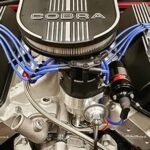Engine brakes, commonly known as “Jake brakes,” are essential for assisting heavy vehicles in maintaining control during deceleration. However, their use in wet conditions requires careful consideration. Understanding why engine brakes may pose risks in the rain is crucial for safe driving practices.
The Mechanics of Engine Brakes
Engine brakes work by altering the engine’s exhaust valves, creating resistance that slows the vehicle without relying solely on the wheel brakes. This method is highly effective on dry surfaces, providing controlled deceleration and reducing wear on brake components.
Risks of Using Engine Brakes in the Rain
In wet conditions, the reduced traction between tires and the road surface can lead to potential hazards when using engine brakes:
- Loss of Traction: Engine brakes apply deceleration force primarily to the drive wheels. On slippery roads, this can cause the drive wheels to lose traction, leading to skidding or jackknifing, especially in heavy vehicles.
- Sudden Deceleration: The abrupt nature of engine braking can exacerbate traction loss on wet surfaces, increasing the risk of losing vehicle control.
Manufacturer Guidelines and Expert Opinions
Many vehicle manufacturers advise against the use of engine brakes in slippery conditions. For instance, engine brake instructions often state not to use them when driving on wet or slippery roads, as it may lead to loss of control.
Experienced drivers suggest that while engine brakes can be used cautiously in wet conditions, it’s essential to adjust their settings appropriately and combine them with gentle application of the foot brake to maintain control.
Best Practices for Driving in Rainy Conditions
To ensure safety while driving in the rain:
- Use Lower Engine Brake Settings: If necessary, set the engine brake to its lowest setting to minimize abrupt deceleration.
- Combine Braking Methods: Use the engine brake in conjunction with light foot braking to distribute braking force more evenly across all wheels.
- Monitor Road Conditions: Continuously assess the road surface and adjust braking techniques accordingly to maintain optimal traction.
Conclusion
While engine brakes are valuable tools for controlling vehicle speed, their use in rainy conditions requires careful consideration due to potential traction loss. Adhering to manufacturer guidelines and adopting cautious driving practices can help maintain safety on wet roads.
Frequently Asked Questions
1. Why is using an engine brake in the rain potentially hazardous?
Engine brakes can cause the drive wheels to lose traction on wet surfaces, leading to skidding or loss of control.
2. Can experienced drivers safely use engine brakes in wet conditions?
Yes, with caution. Experienced drivers may use engine brakes on the lowest setting and combine them with gentle foot braking to maintain control.
3. What do manufacturers say about using engine brakes in the rain?
Many manufacturers advise against using engine brakes on wet or slippery roads due to the risk of traction loss and potential skidding.
4. Are there alternative braking methods recommended for rainy conditions?
Using the vehicle’s primary braking system with gentle pressure and maintaining a safe following distance is recommended to ensure controlled deceleration on wet roads.
5. How can I maintain safety while driving in the rain?
Reduce speed, avoid sudden maneuvers, use appropriate braking techniques, and ensure your vehicle’s tires are in good condition to maintain optimal traction.










